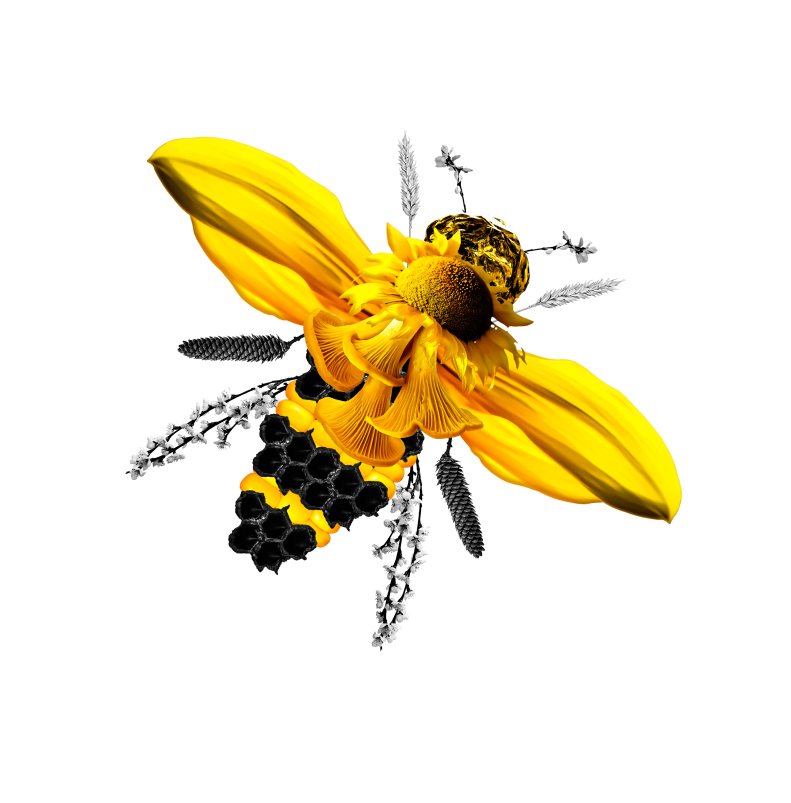Atmospheres
Art, climate and space research
The mobile pavilion spans the arc from the regional to the planetary; it sensitizes us to what surrounds us as a matter of course: Atmospheres. The exhibition shows young art and the latest research on atmospheres and asks about life-friendly conditions in times of climate change. On the one hand, the pavilion offers a projection space where video-space-sound installations can be seen on the wall and floor; on the other hand, it serves as an information carrier.
10 video art contributions are presented in the projection room of the pavilion: They are commissioned works by 17 artists with a connection to Styria from 9 countries (Austria, Germany, Bosnia, Serbia, Israel, United States, Canada, Costa Rica, Brazil).
Idea and realization:Alexander Kada (Kadadesign/Kadaconcept)
Curator Astrid Kury
Artists: visual arts and composition/sound art
Azra Akšamija (BiH/AT/US) & Dietmar Offenhuber (AT/US)
Benedikt Alphart (AT) & Adina Camhy (AT)
Michaela Grill (AT/CAN)
Markus Jeschaunig (AT)
Rainer Kohlberger (AT/DE) & Peter Kutin (AT)
Gudrun Krebitz (AT/DE)
Ralo Mayer (AT)
Muntean/Rosenblum: Markus Muntean (AT) & Adi Rosenblum (IL/AT)
Kay Walkowiak (AT)
Richard Wilhelmer (AT/DE) & Sonja Mutić (AT/BiH/SRB/US/CR)
Art project for children: Silvana Beraldo (BR) & Daniela Brasil (BR/AT)
Azra Akšamija & Dietmar Offenhuber:
Navigating the Sky

Image information

Azra Akšamija, artist, architectural historian and director of the MIT Future Heritage Lab, * 1976 in Sarajevo, studied architecture at TU Graz, lives and works in Cambridge, Massachusetts (USA).
Dietmar Offenhuber, designer and artist, * 1973, lives and works in Boston, Massachusetts (USA).
Azra Akšamija and Dietmar Offenhuber combine two different systems of knowledge that are used to explore the sky in their video. The first part of the video presents an indigenous perspective of the world and is named after a Hawaiian sea bird. The quotes used are from Nainoa Thompson, who preserves and has mastered Polynesian seafaring using the "star compass". The accompanying imagery was developed by using an AI tool. The second part displays a galactic panorama that illustrates what we currently know about celestial objects, which are located on an unaltered image of the Milky Way, and is accompanied by a sonification.
The basis for this is the SIMBAD database, which contains all information ever published on astronomical objects in the Milky Way. Surprisingly, the instruments used for exploration are clearly recognisable on the screen, such as the image sensors of the Kepler telescope.
Adina Camhy: Passage
Kompositionsauftrag: Benedikt Alphart, in Zusammenarbeit mit IEM/KUG und Schallfeld Ensemble
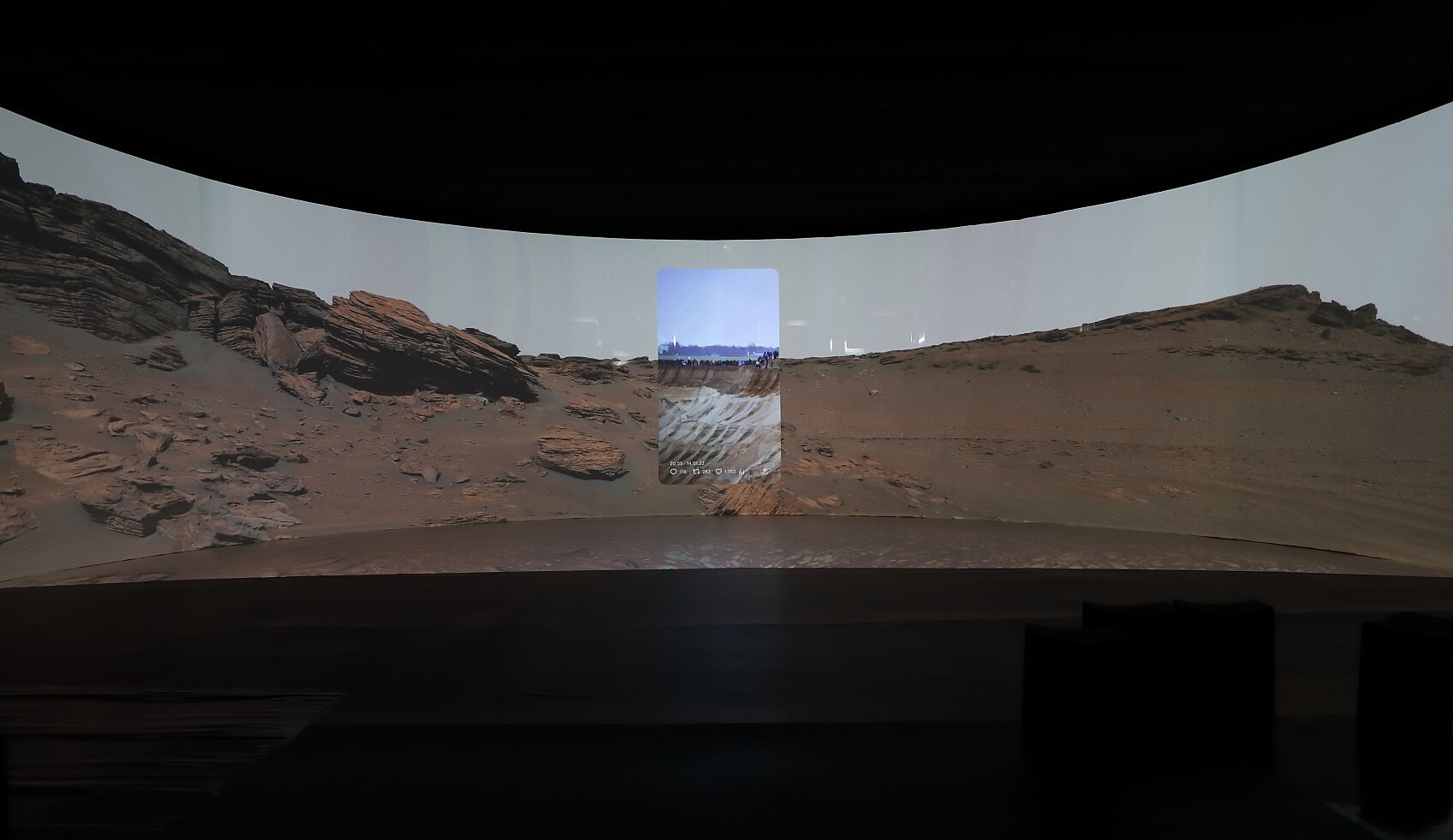
Image information

Adina Camhy, visual artist, * 1987 in Graz, lives and works in Graz and Vienna.
Benedikt Alphart, composer and computer musician, * 1998 in Vienna, lives and works in Graz.
The 360-degree panoramic photo taken by NASA's Mars rover Perseverance in 2022 is the largest image of the Martian surface available until now, providing a 2.5-billion-pixel window to an alien world. Adina Camhy explores this Martian landscape, referring to associated notes stored on the smartphone, used here as a medium of world exploration. The geopolitical as well as ethical questions that arise through humanity's expansion into space are the focus of this exploration. Featuring an Earth-like variety of forms of sound and instrumental-experimental explorations recorded together with Schallfeld Ensemble (cello and flute), Benedikt Alphart's composition acoustically traverses the spherical expanse.
Image and sound each pursue their own narrative and ultimately come together, forming a multi-dimensional analysis of the relationship between humans and their environment, both on Earth and in space.
Michaela Grill: I’m floating in the most peculiar way
Sound: Stefan Németh
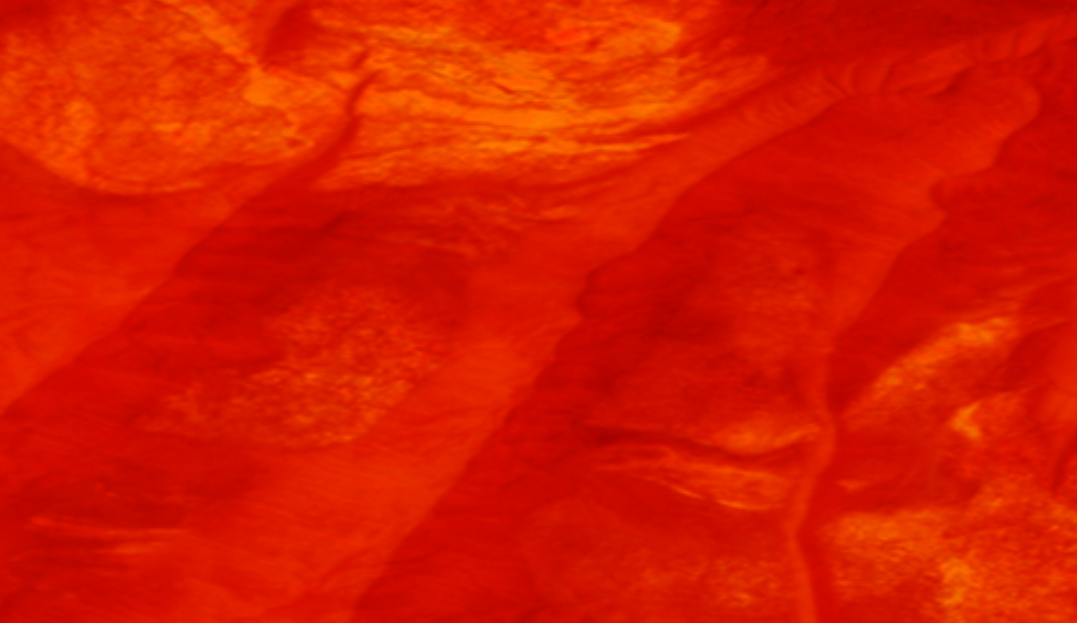
Image information

Michaela Grill, filmmaker and artist, * 1971 in Feldbach (AT), lives in Vienna and Montreal, Canada.
Michaela Grill has been examining the political-ecological issues affecting polar ice landscapes for many years and has also been repeatedly involved in scientific research projects as an artist. Her video is rich in scientific image material: photographs of planetary surfaces, of microbial life frozen in the ice, and of freeze etchings from blasting microorganisms out of the ice.
The shimmering/glowing orange and sun-like ground, however, give the impression that the viewer is floating through the glowing hot gases of an exoplanet and could immerse you in an experience featuring hot ice, ruby-red clouds, or metallic rain.
Markus Jeschaunig: Electric Atmospheres
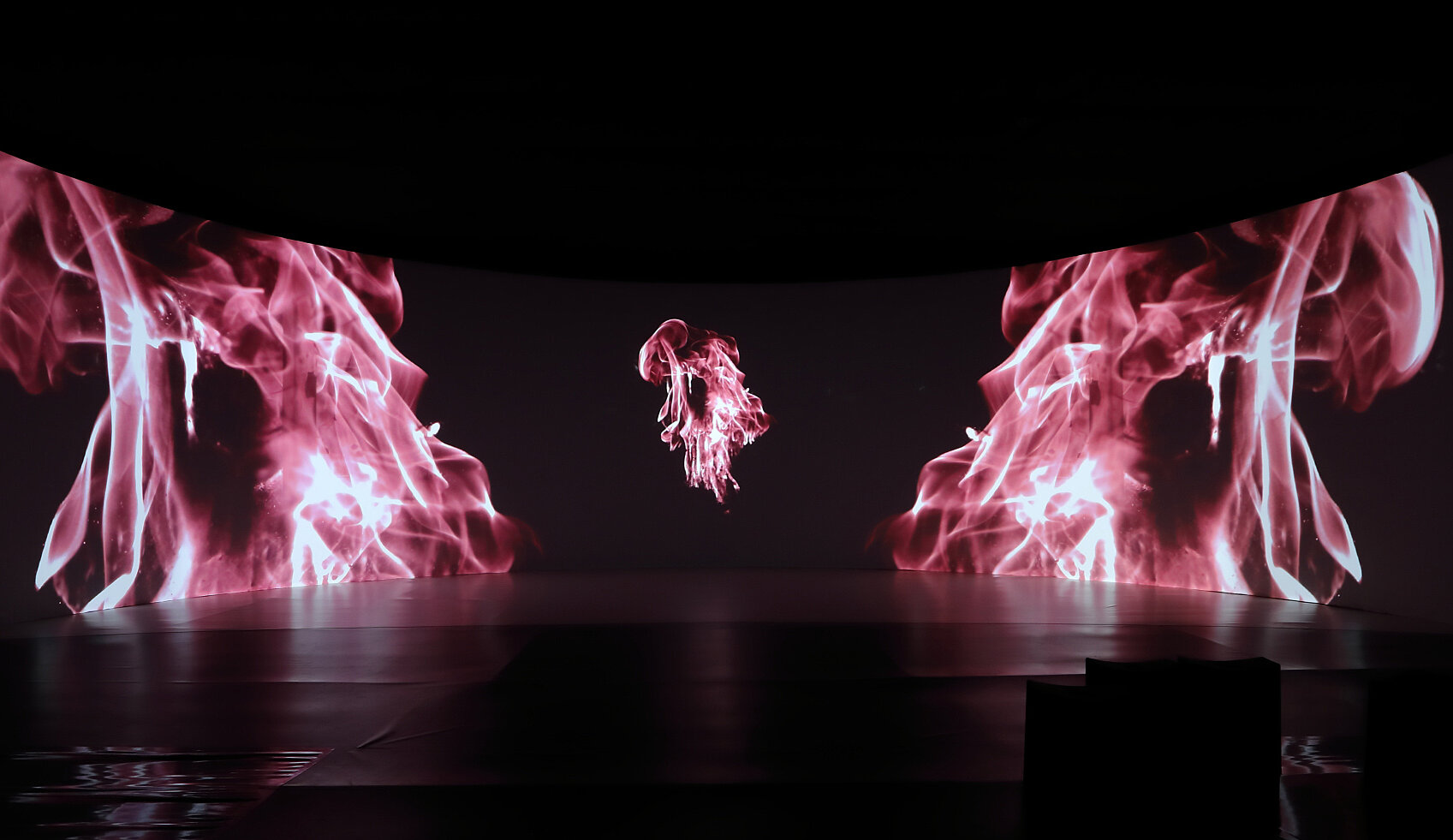
Image information

Markus Jeschaunig, architect and artist, * 1982 in Graz, lives and works in Graz and the surrounding area.
In his video, Markus Jeschaunig illuminates the creative power of lightning. Lightning balances on the fine line between creation and destruction. In space research, lightning is studied as elements of an atmosphere as well as to examine its role in forming the building blocks of life. Jeschaunig experimented with lightning to create his video in the Nikola Tesla Laboratory in Graz. A blast of lightning that touched down in a pile of steel dust produced a fireball with fascinating flow patterns.
By using a high-resolution film camera that captured 2,000 frames of footage per section, one second of real time could be shown in about one minute of film. The following scene shows fulgurites or natural glass tubes formed by lightning.
Rainer Kohlberger: No One Knows
Kompositionsauftrag: Peter Kutin
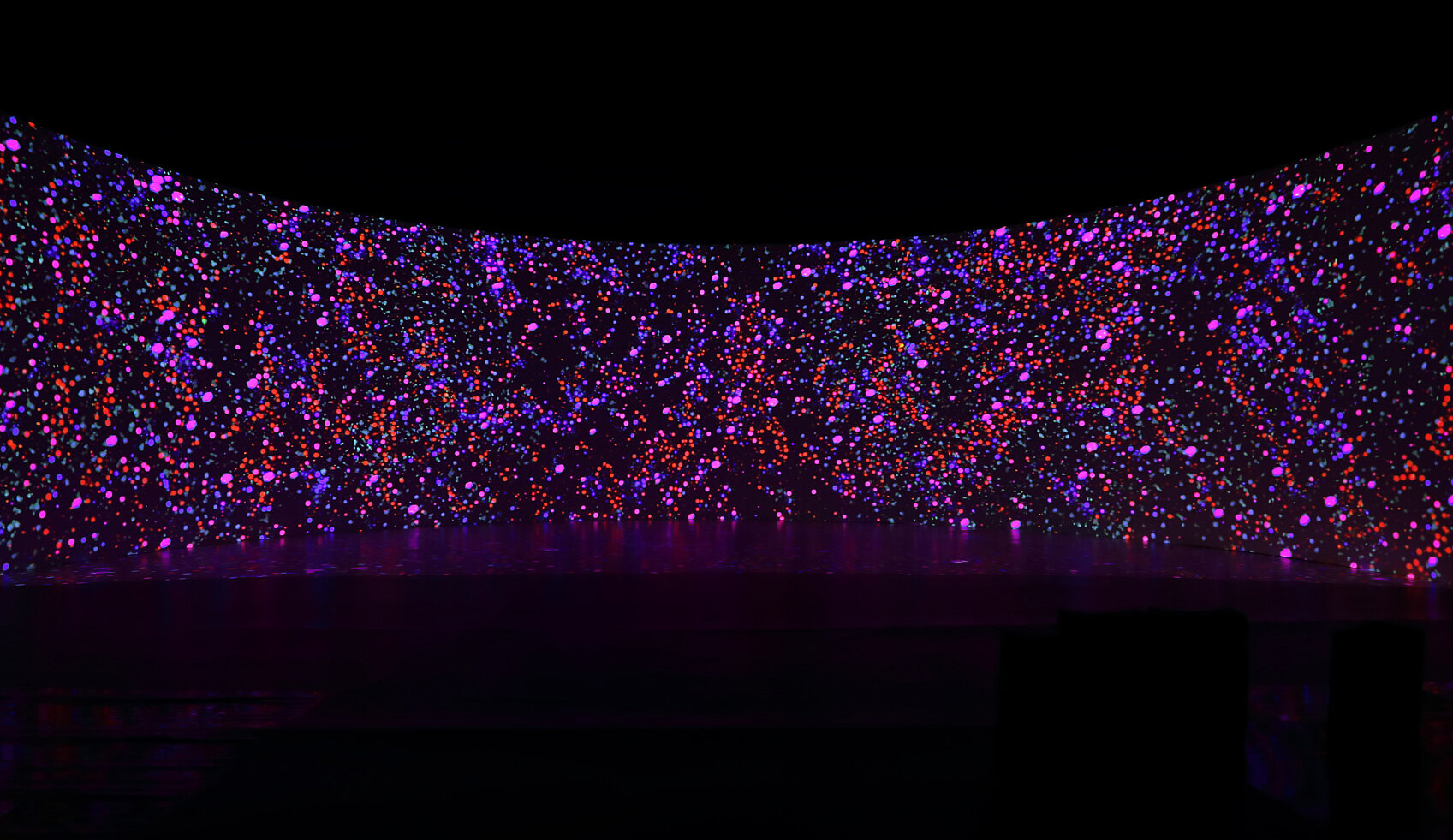
Image information

Rainer Kohlberger, filmmaker and video artist, * 1982 in Linz, lives and works in Berlin.
Peter Kutin, artist and composer, * 1983 in Leoben, lives and works in Vienna.
How can one artistically represent the unimaginable? In many cases, techniques used to create a sense of alienation can also be used to create new worlds. Rainer Kohlberger works with self-developed algorithms and has created a dense stream of multicoloured light points by using scientific image material. This stream can now be interpreted as the flickering in alien atmospheres, the oscillations of molecules, the rotation of the planets, or the flow of micro-organisms…perhaps even noise filled with meaning.
Peter Kutin's composition extends this whirring noise up into the space by adding circling, floating sound elements, which, as they intertwine at different heights, always open up new passages and lead to the next completely unusual path.
Gudrun Krebitz: The Absence of Light
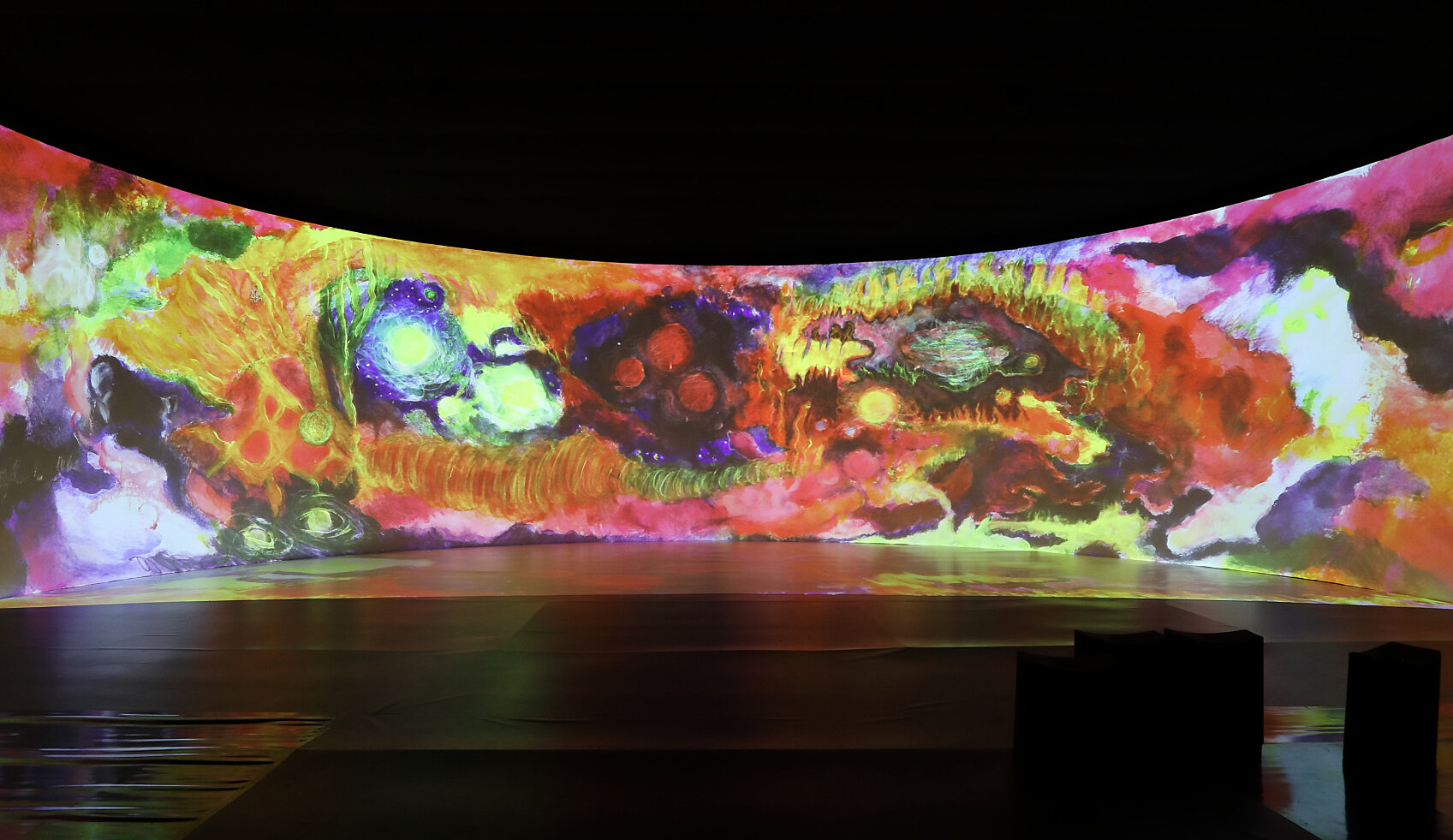
Image information

Gudrun Krebitz, artist and filmmaker, * in Graz, lives and works in Berlin.
Gudrun Krebitz's films are characterised by her poetic view of science, which the artist uses to connect distant, foreign objects with the feeling of being foreign. In her cinematic poem on research, she tells how scientists are searching for life by examining the spectrum of light given off by distant exoplanets, describes clouds that are made up of rock and even gems, as the research using atmospheric models actually suggests, and dives into the infinite oceans on water planets where the waves never break and alien life might be found.
Ralo Mayer: Titularium eines weit entfernten Himmelskörpers
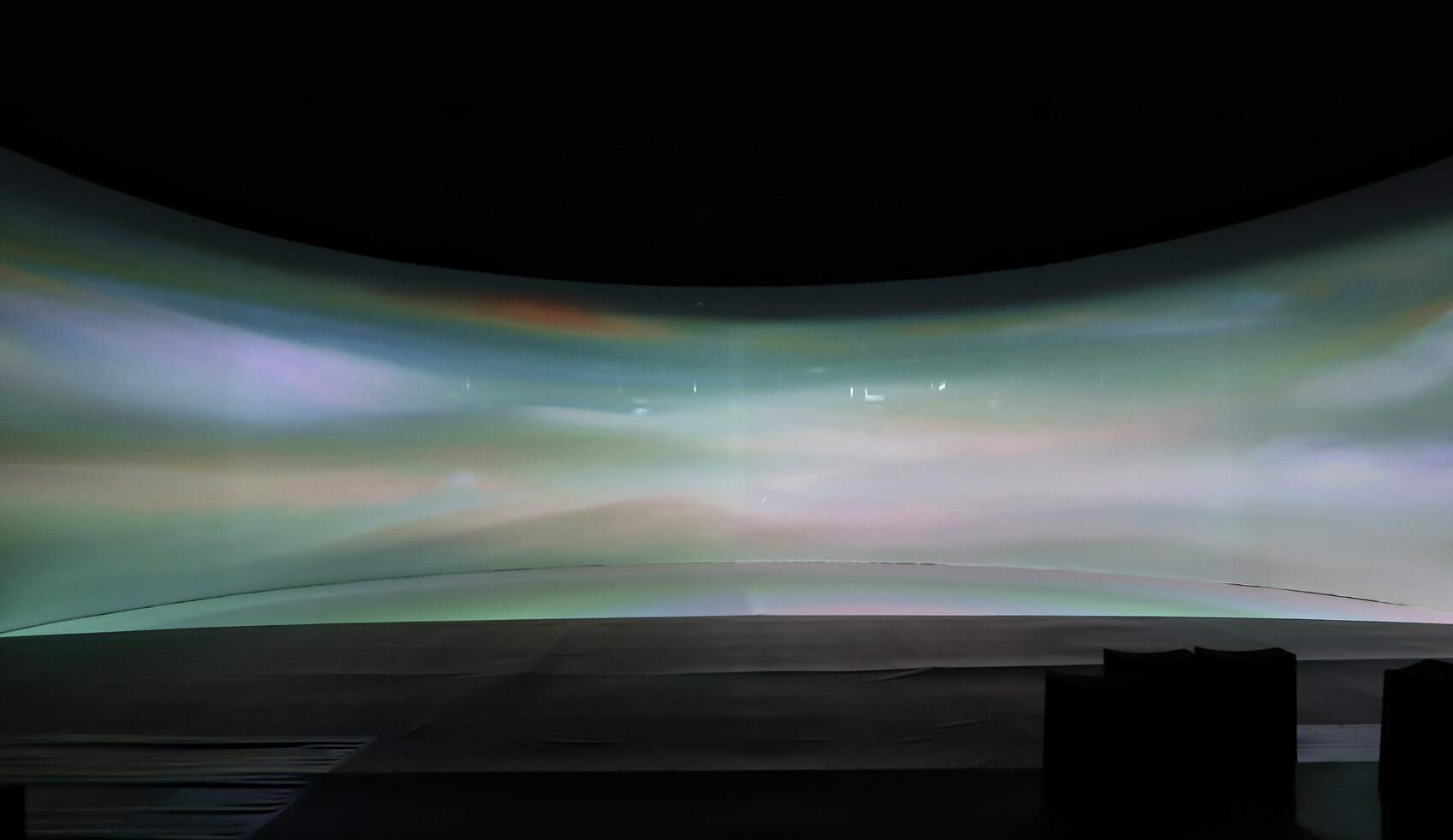
Image information

Ralo Mayer, visual artist, * 1976 in Eisenstadt, lives and works in Vienna. He is involved in the art scene of Styria in many ways.
For many years, Ralo Mayer has focused on how to imagine life on space stations or settlements in space. His sci-fi radio play about an extraterrestrial expedition that sets out to explore the atmospheres on exoplanets is illustrated with fantastic cloud simulations created in a Cloud Tank. The Cloud Tank is an aquarium that is used as an analogue medium to produce illusory effects and was used in science fiction film productions in the 1970s.
On the one hand, the current-like patterns are reminiscent of the glow that appears in the evening skies due to increased pollution; on the other hand, they simulate patterns of dense cloud cover that occur on other planets.
Muntean/Rosenblum: The Twilight of Our Heart 2
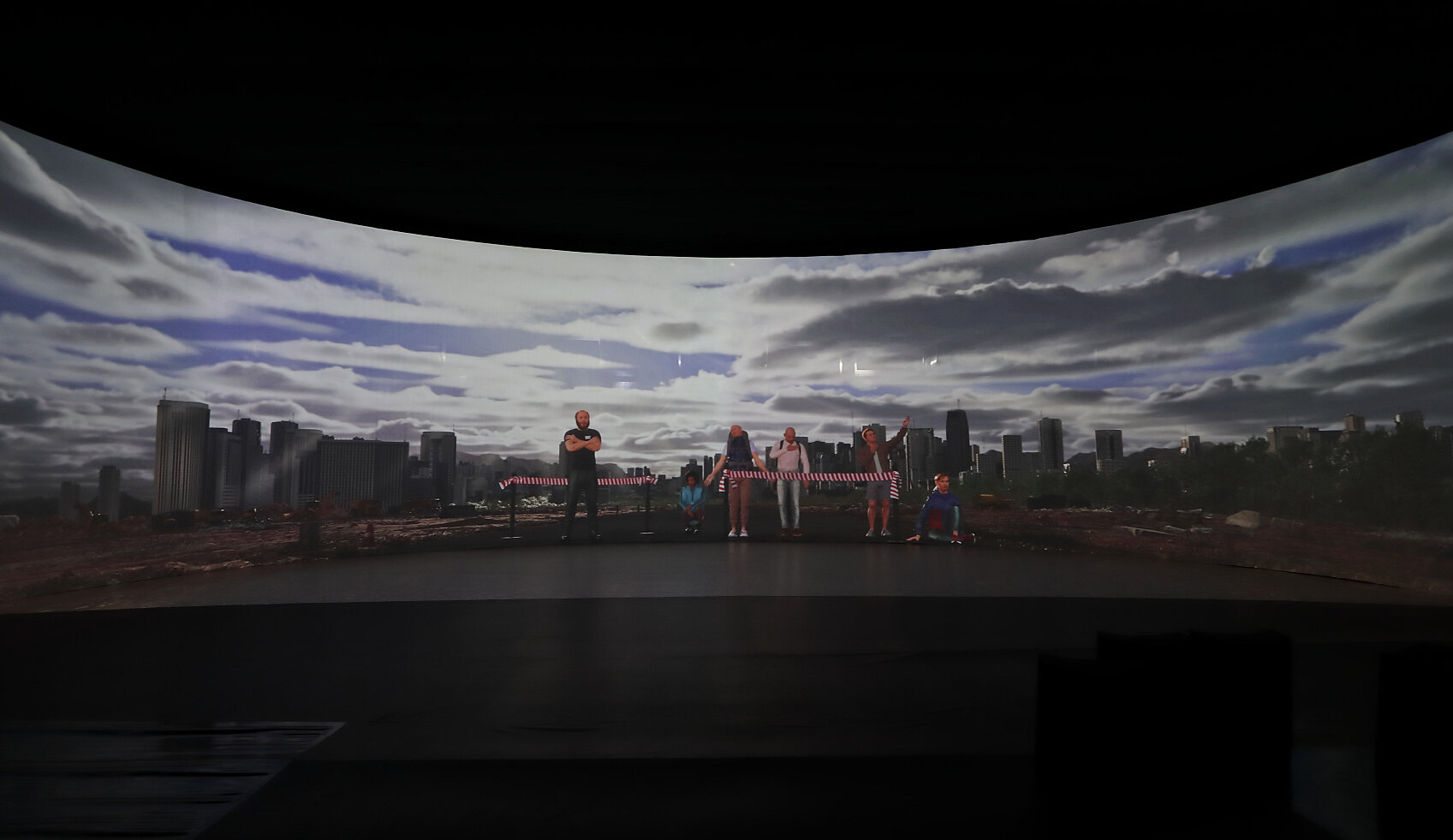
Image information

Markus Muntean, * 1962 in Graz, and Adi Rosenblum, * 1962 in Haifa (Israel), live and work in Vienna and have worked together as the artist couple Muntean/Rosenblum since 1992.
For the projection in the pavilion, Muntean/Rosenblum developed the video entitled "The Twilight in Our Heart" still further, taking us deep into the dystopian world of artificial universes. The dramatic panorama with its symbolic sunbeams is now animated in "unreal 5". And the singers of the motet written by Spanish composer Cristóbal de Morales (1500 - 1553) have been transformed into metahumans by using "motion capture". The touching physical intensity of the polyphonic voices tells how fate interlocks them with one another.
Thus connected, the animated beings stride as though they are the last humans towards the final barrier and pause there in a number of ways. A broad spectrum of distress, flight, and expulsion is revealed.
Kay Walkowiak: Life Beyond

Image information

Kay Walkowiak, sculptor, photographer, and video artist, * 1980 in Salzburg, lives and works in Vienna. He is involved in the art scene of Styria in many ways.
In many of his works, Kay Walkowiak examines how art can potentially take on an active role or represent a driving force in the present, huge ecological crises. By evoking the aesthetic experience, the artist says, a direct, intuitive feeling of the connection with all living things can emerge and show us a new way to interact with nature. The video places heartbeat and breath, life and atmosphere in relation to one another.
Scenes of volcanic landscapes are shown, where early forms of life could have originated, and through the almost physical experience of the heartbeat, the wind that blows across the rocky cliffs of the volcanic landscape in the picture transforms into the breath of the Earth.
Richard Wilhelmer: Mars, Myself and I
Kompositionsauftrag: Sonja Mutić
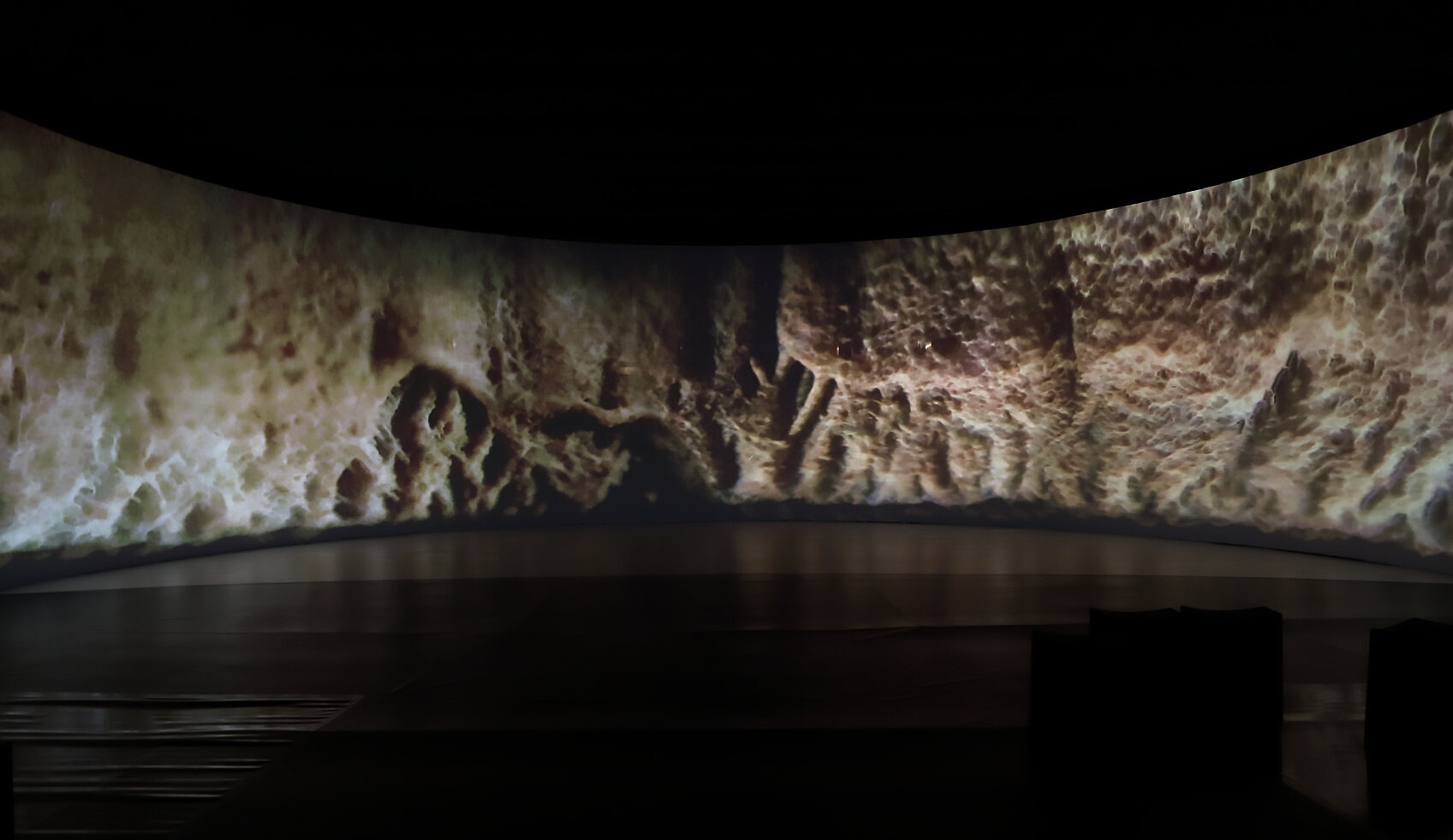
Image information

Richard Wilhelmer, filmmaker and visual artist, * 1983 in Judenburg, lives and works in Berlin.
Sonja Mutić, composer, * 1984 in Belgrade, lives and works in both Costa Rica and Cambridge, Massachusetts (USA).
The inspiration for this artistic work came from the "Martian canals", discovered by the astronomer Giovanni Schiaparelli (1835 - 1910), which inspired the popular myth of Martians. About 100 years later, however, scientists proved these canals were an optical illusion: Schiaparelli had only seen the veins in his own eye. Based on this, Richard Wilhelmer uses the eye to take the viewer on a journey through inner galaxies and extraterrestrial landscapes.
In this part of the exhibition, the high-resolution macro images of his iris look like topographical photographs of the surface of Mars. Sonja Mutić makes this journey even more intense and exciting with crackling eruptions that are swept away by winds from other planets, acoustic simulations of passing objects and rhythms of failure.
Columns and outdoor space: Art project for children
Daniela Brasil, Silvana Beraldo: Cosmic beings, strange worlds
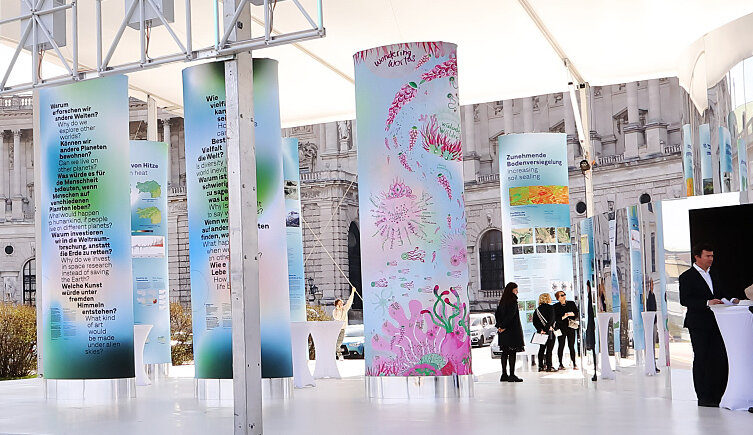
Image information

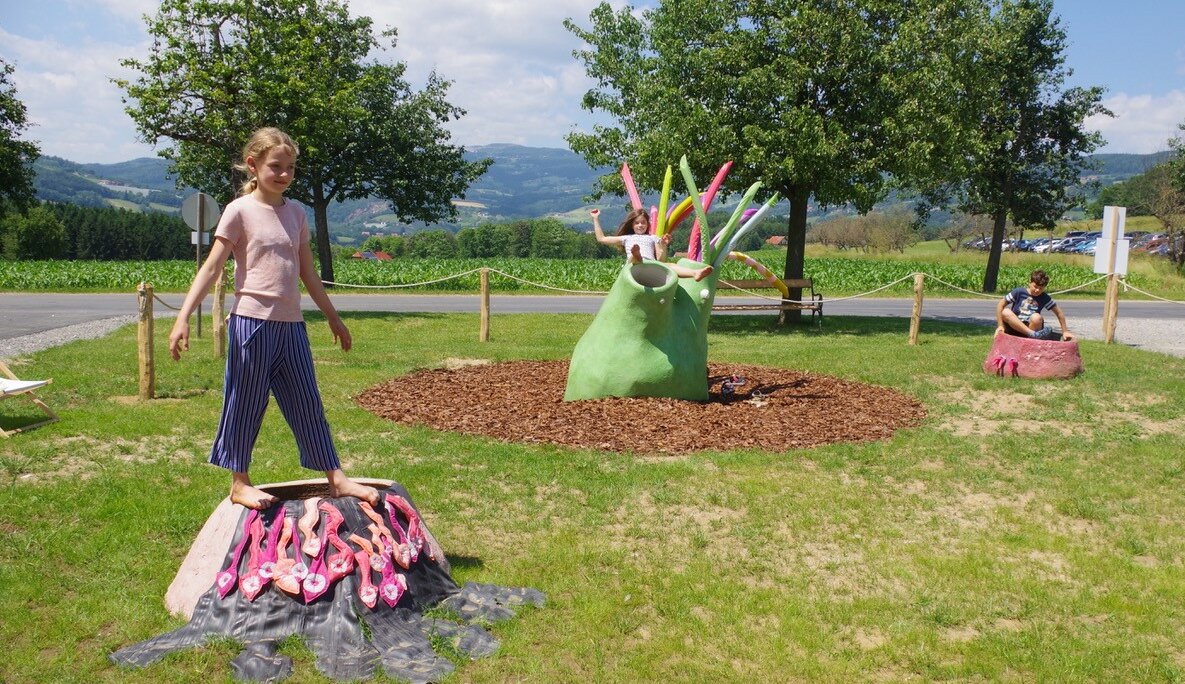
Daniela Brasil, artist, urbanist and researcher, * 1975 in Brasil, lives and works since 2010 in Graz.
Silvana Beraldo, illustrator, * 1966, lives and works in Sao Paulo, Brasil.
Space explorers believe that there are at least 100 billion exoplanets in our galaxy. That means there are a lot of new places where life could live! So how diverse could this life possibly be?
Daniel Brasil and Silvana Beraldo invite us to help them to imagine these unknown, different beings and worlds. The diversity of organisms they have created defies classification, although the green and pink tones seen in the watercolour drawings and which mix with the brown tones used for the earth refer to fungi, bacteria, plants, or members of the animal kingdom. Through contradictions that can be heard in many languages, they undermine the expected: glaciers glow, forests rage, stones bloom, rivers float ...
